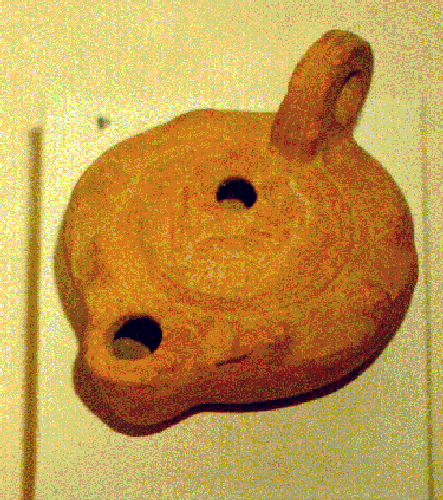|
| Clay Oil Lamp from Alcochete near Setúbal: 1st-3rd centuries AD |

Ceramic imitations of fancy Greek metal lamps of Classical times, led to the great popularisation of mass-produced clay oil-lamps like this little one from Alcochete. Such lamps are found in great numbers in Roman towns and villas around the Mediterranean. Although found in London and made in Colchester, these lamps were never very popular in Britain.
The lamps were easy to carry around the house in the dark winter months and to fill by the central hole, and easy to hang up by the hole in the handle when not needed in the summer. The hemp or linen wick would have been coiled up inside, saturated with vegetable oil, and gradually teased out as it burned at the spout.
The shape, broad and shallow, maximised burning time - but pulling the wick out must have been labour intensive, reminding us that the Romans were a slave-using society.
The decorated disk of the lamp shows the goddess Fortuna.
© 1998 Oxfordshire Museum Service, Setúbal Museums and the Benaki Museum